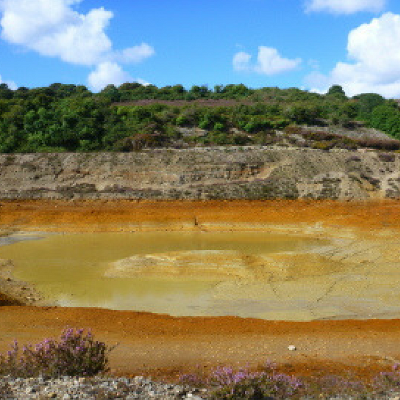Avarice: Algal Valorisation & Remediation of Metal Ion Contaminated Effluents

University of Bath: Christopher Chuck
University of Bristol: Tom Scott
Cardiff University: Devin Sapsford
University of Exeter: Chris Bryan (PI)
Plymouth Marine Laboratory: Mike Allen
Background
Water pollution is a major global problem accounting for over 14,000 deaths daily, and water scarcity will threaten the livelihood of almost 2 billion people by 2025. Mining operations contribute by consuming and polluting watercourses, especially through the generation of acid mine drainage (AMD). Declining ore grades globally and increasing reliance on the use of Critical and e-tech metals in manufacturing mean supplying and securing mineral resources with a minimum environmental footprint is a serious challenge. The recovery of metals from secondary resources is, therefore, essential. At the same time, affordable and sustainable energy provision is another global concern.
AVaRICE addresses all three components of this increasingly recognised Resource-Energy-Water Nexus paradigm. Each aspect is relatively well studied in isolation, but are not commercially successful as individual processes: algae have been trialled to bioremediate AMD but are not competitive with chemical treatment (rate-wise) or compost wetlands (cost-wise); biorecovery of metals is not competitive with established hydrometallurgical alternatives; and, although promoted as modern alternatives, current-generation biofuels have limited environmental benefits whilst putting pressure on land and water resources.
Project summary
The community formed through a GW4 Initiator award which led to this Accelerator project. The core objectives of the project were met, with algal cultivation completed at Plymouth Marine Laboratory, and DNA harvested from both Wheal Maid and Wheal Jane water samples processed. At the end of the project, work continued on next-generation sequencing analysis. Additional work was undertaken on investigating the off-line growth of algal biomass, and the adsorption and desorption of zinc.
The community attracted significant national and international interest from the media, industrial and academic partners. They were invited to visit the Shanks/REYM facilities in the Netherlands to explore future collaborations, and started UK-USA collaborative links with Arizona State University.
The community collaborated on numerous papers and grant applications, including an expression of interest for the Innovate UK Biotechnology Catalyst Early Stage Translation call.
As the community has grown, partners have joined together to pursue common interests allied to or outside of the AVaRICE concept, leading to many other joint research avenues.
Little of what has been achieved could have been done by a single group or institution. Huge progress towards proving the concept of the AVaRICE process has been made, and the community is highly motivated and determined to pursue the development of AVaRICE further.





